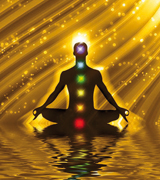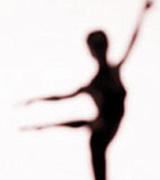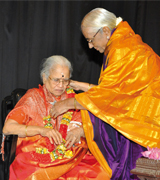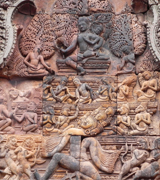COVER STORY
Can art heal?
V. RAMNARAYAN

Baiju Bawra was the unlikely hero of the eponymous 1952 Hindi film, a legendary character loosely based on the life of a 16th century Gwalior court musician. Played by Bharat Bhushan, Baiju performs miracles through the movie, in the limpid voice of Mohammad Rafi, singing the lyrics of Shakeel Badayuni in tunes composed by Naushad. He is joined by such eminent Hindustani vocalists as D.V. Paluskar and Amir Khan in variously bringing tears to the eyes of a stone idol with raga Darbari, starting a fire with Deepak and dousing it with Megh, and making a bed-ridden guru walk with a poignant Malkauns. The ringing tones of Rafi and Lata Mangeshkar can be heard across rivers and mountains, though they can unite lovers only in death. It was a love story all right, but it was more about the power of art, of such sublime music that the viewer was more than willing to suspend disbelief.
Music in Indian films often breaks or melts hearts, reunites families torn asunder in childhood, heals the sick, settles arguments about the superiority of one or other school of music or artist. In one astonishing sequence in a popular film in the 1960s, a personal attendant sings in a hospital ward for the patient, accompanying herself on the veena. The screenplay did not suggest that the music had a hand in the recovery of the patient believed to be terminally ill, giving the credit entirely to the doctor working day and night to save him and dying in the process, but such a turn would have lent it a nice touch. This writer for one thought the scene was absurd, but had to eat humble pie as he twice became witness to similar scenes in real life.
COVER STORY
Dance and wellness
DR. KANAK RELE

More than half a century ago, as a child, I came face to face with a tragic incident that had befallen a young girl whose life revolved around dance. After a bout of high fever the girl complained about terrible stiffness in her leg; she just could not move that leg. Even plain walking was torture. Medical opinion varied as to the cause of this sudden onslaught of stiffness and pain. Different specialists prescribed different approaches to alleviate the problem. It was eventually accepted that with medicines and oil massage the greatest need was for a proper and indepth regime of exercises.
It is at this stage that a miracle (that is what the girl thought) took place. She was learning Kathakali and her guru, a renowned Kathakali artist, stepped forward with a series of movement exercises which he insisted his pupil should perform. “Don’t you want to get well and start dancing? Then do these exercises daily”. These exercises are what a Kathakali trainee did daily, early in the morning. They are based on Kalaripayattu, the famous martial art of Kerala. There is also a strong Yoga element intermingling with the Kalaripayattu movements. The guru also provided the famous Kerala ‘tailam’ (medicated oil used for body massage). The fabulous confluence of dance, martial art, yoga and massage – all combined with a fierce desire to get well and dance performed the miracle. The girl danced – dedicated her life to the cause of dance.
INTERVIEW
My heart was always in teaching music
T.R. BALAMANI IN CONVERSATION WITH K. VENKAT

T.R. Balamani has long been a name to reckon with in the Carnatic music scene in Mumbai. She is a versatile guru, having trained three generations of disciples in Mumbai, many of whom are renowned performers and teachers. Recently she relocated to Chennai where her daughter lives in an apartment at Mylapore. Excerpts from an interview for Sruti.
How did your musical journey begin? Who were your gurus?
I grew up in Kerala. My father, T.S. Ramanathan, encouraged me and my siblings (we were four girls and two boys) to listen to a lot of Carnatic music. He was a double M.A. – in Sanskrit and English Literature – from Annamalai University. Though he had not learnt the lakshana of music, he had a strong sense of lakshya. He was well versed in ragam singing, and could render many small kritis very beautifully. We absorbed a lot of music instinctively from him, whenever he sang at home. As my father used to visit the music department at Annamalai University, giants like Sathur A.G. Subramaniam and others became his close friends, and would often visit our home in Kerala. As a result we inculcated a passion for music from a very young age. I began performing at the age of nine. Initially my father was a little reluctant to allow me to perform, as society was more orthodox then, and girls who performed often were frowned upon by polite society.
THEATRE
REAMKER - The Ramayana from Cambodia
BHARATHI RAMASUBBAN

As I strolled down the south-western pavilion of the magnificent Angkor Wat on a hot and humid morning in August, I finally succeeded in leaving behind the throngs of tourists trying to capture that elusive sunrise shot against the famous gopuras. Armed with no guide and just a book about the architecture of the Angkor temples, I set about trying to see it all in a day, only to find that it was impossible. Undeterred, I returned the next morning, better informed and better hydrated, to be greeted by several familiar scenes from the Ramayana (bas-reliefs depicting Ravana lifting Mount Kailas, death of Vali and the war of Lanka), Mahabharata, Bhagavatam and Kumara Sambhava.
Built in the 11-13 century AD, these temples have seen the Thai invasion, annexation by the Vietnamese, French colonisation, military coups, civil war and most recently, the horrific Khmer Rouge reign. Yet, these corridors seem to have frozen in time, as though nothing had transpired since the death of Vali.


